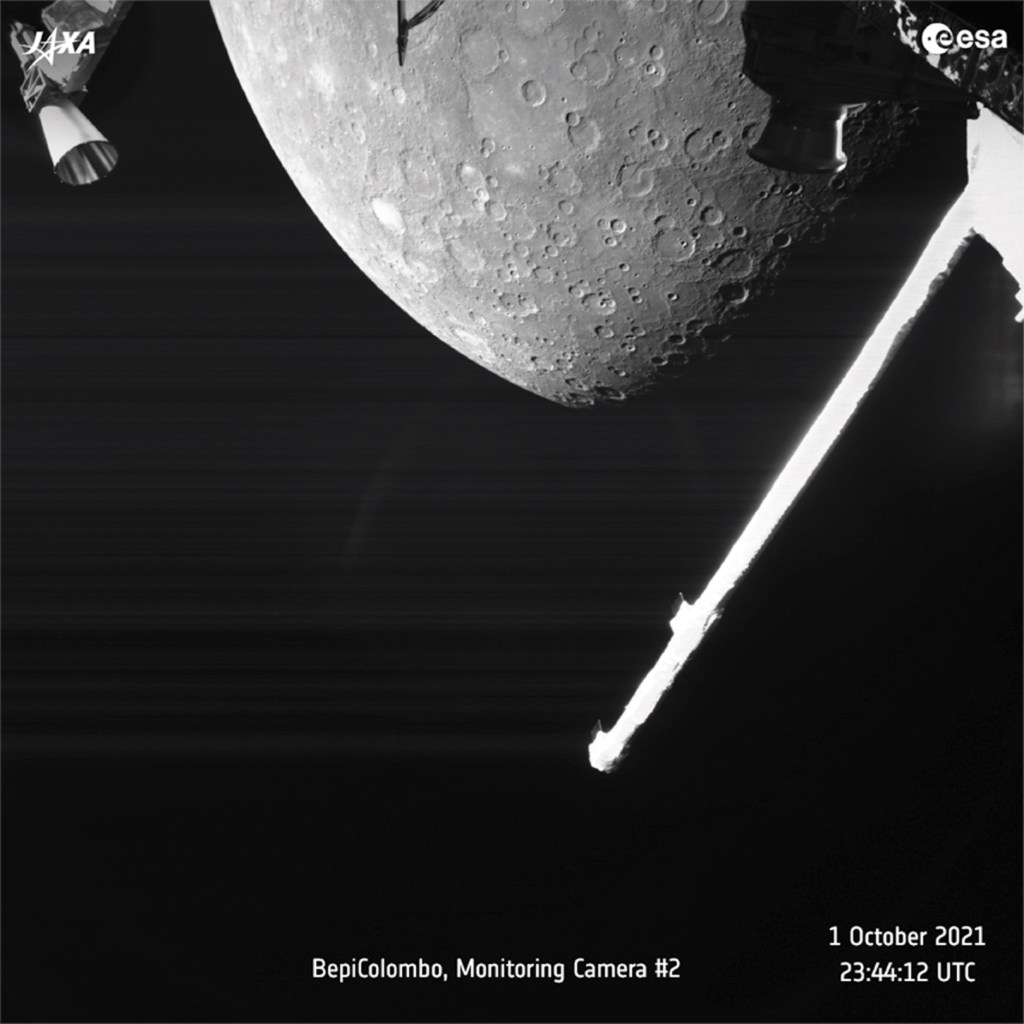OUR SPACE: Mercury gets an extra year of mystery
Published 6:41 pm Monday, September 9, 2024

- The joint European-Japanese BepiColombo mission captured this view of Mercury on Oct. 1, 2021 as the spacecraft flew past the planet for a gravity assist maneuver. Parts of the spacecraft also can be seen.
As our solar system’s innermost planet, Mercury doesn’t get nearly the amount of press it deserves. It’s not hard to understand why: it’s a pretty dead rock very close to the sun, and most of us have never seen it. Because of its proximity to our local star Mercury is often hidden in its glare; the few times a year it’s visible just above the horizon after sunset or before sunrise it’s generally mistaken for a star, and a not very bright one at that…
Trending
Only two spacecraft have successfully explored the mysterious little world — the Mariner 10 probe looped around Mercury three times in 1975 and mapped just about half of its surface. It intended to do much more but due to a failure of the on-board tape recorder (yes, that was high-tech back in the day) and limited data capacity the rest never made it to Earth.
It wasn’t until the Messenger spacecraft arrived over three decades later in 2011 that we got a better view of this strange planet. It took almost seven years to get to Mercury. While it’s really not that far away in cosmic terms, space travel to one of the inner planets is very difficult: if you launch a spacecraft toward the sun it will soon experience its strong gravitational pull and accelerate to insanely high speeds before of course just melting away. The key to success here is to perform complicated orbital maneuvers around other planets and the sun itself to “use up” the extra energy. But Messenger made it eventually and orbited the planet until 2015 when it ran out of maneuvering propellant and was intentionally crashed into Mercury, leaving another crater on its heavily pockmarked surface – long time readers of our space will remember all the excitement.
Back then news from Mercury came in all the time — from glorious high-resolution photos to surface composition analyses, and some plain old beauty shots to boot. Mercury is hellishly hot on its sun-facing side and unbelievably cold on its night side, and there is evidence of water ice in its permanently shadowed craters on its poles.
Since then, the moonless little planet has slipped back into oblivion and mystery, back to just being the first rock from the sun.
All this was supposed to change by the end of 2025, when the joint European — Japanese BepiColombo spacecraft was scheduled to arrive at Mercury to explore the planet in far greater detail than before. BepiColombo is a twin mission, actually — upon arrival it will separate into two independent spacecraft that will each explore different aspects of Mercury.
But alas, we’re going to have to wait an extra year for more awesome photos, and Mercury gets to enjoy 12 extra months of planetary obscurity and mystery. BepiColombo suffered a power problem that kept it from executing a planned engine burn for another looping maneuver to get it to Mercury by November 2025. But all is not lost — even without this missing flyby the spacecraft will still get to Mercury — but a solid year later than planned.
Trending
Big sighs of relief all around!
It’s really remarkable how engineers on Earth can troubleshoot a spacecraft millions of miles away, by analyzing data and running diagnostics programs, and then some smart person comes up with a software patch, or a way to re-route data or use other systems onboard in ways they were never meant to be used. Oddly enough in the case of BepiColombo the new trajectory will actually send the spacecraft much closer to Mercury’s surface on the next flyby, which may yield some unexpected bonus science results. Talk about making lemonade!
So now we’ll have to wait until November 2026 before BepiColombo finally arrives in Mercury’s orbit. That’s not really that bad, given the fact that these kinds of missions always have to think long-term and have contingency plans to turn any lump of scientific coal into a shining publicity diamond.
Bepi Colombo’s mission is slated to last about a year with a possible year-long extension after that, if budgets allow – and honestly, it’s so much more cost-efficient to keep a well-operating spacecraft in orbit, especially if there was a plan already, than to shut it down and start over with s new project which might take years or even decades to get to this point.
Visit the BepiColombo website at https://www.esa.int/Science_Exploration/Space_Science/BepiColombo — they have all the latest news plus a detailed archive of past stories, great photos and even movies of its planetary visits. There’s something for everybody, and if you really want to creep yourself out you can listen to the sound of the solar wind at Mercury during a flyby as processed by the BepiColombo team!
Beate Czogalla is the Professor of Theater Design in the Department of Theatre and Dance at Georgia College & State University. She has had a lifelong interest in space exploration and has been a Solar System Ambassador for the Jet Propulsion Laboratory/ NASA for many years. She can be reached at our_space2@yahoo.com.





